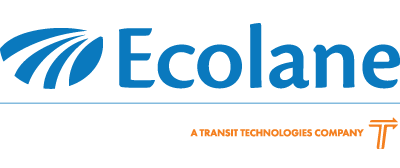Investing in a new route scheduling software system can often be a significant expenditure and is rarely a decision to be made lightly. With so many options on the market, the lifetime value of the software installed is an important consideration to take into account. It’s not only about the cost of the product and its installation, but also understanding whether new hardware needs to be provisioned, if upgrades and installation fees are included, and what kind of annual maintenance costs need to be planned for. Agencies always want a software partner that can offer the best cost-benefit for each year of use. The money saved can lead to increased profits or investment in other initiatives that are important to the growth of an agency.
Advantages of everyone running the same version
When a software company offers a product with multiple versions (or builds) available, managing clients’ needs on the support side is often a challenge. Typically, only a few people may be familiar with a given software build. As time passes by, those staff members may no longer be with the company and new staff may find it difficult to support or troubleshoot issues for clients who are on older software versions, as they may only be trained on the most recent release.
However, when software versions are uniform across an entire customer base, support staff should be familiar with the product whether it was installed 10 years or two years ago. They will more easily be able to investigate issues, answer questions, and find solutions.
Never-ending fees? No thanks.
Charging customers for software upgrades has become the rule, rather than the exception, in most industries and the transit market is no different. With every new upgrade, agencies are paying fees that could better be used toward other initiatives. Moreover, they need to get the upgrades in order to keep their software running optimally.
By incorporating new features into a software company’s core product and building in upgrades as part of the maintenance agreement, customers know exactly what they’re getting from day one and can better plan their annual spend. Removing the decision of whether or not to implement and upgrade this year or next can have significant advantages, especially in an industry like transit, where funding and operational expenditures are very closely tracked and rarely include extra dollars.
New software requiring new infrastructure? No thanks.
Success-driven transit agencies require scheduling and dispatching software with features and functionality that grow in utility but do not require a continuous investment. Hosted, cloud-based software systems are a better fit than “installed” platforms for businesses for a variety of reasons, not the least of which is the ability to avoid managing complicated on-site applications, databases and server infrastructure. Agencies are also not forced to maintain antiquated hardware or operating systems with cloud-based software. Modern, hosted applications typically require nothing more than a standard web browser. If companies are asked to make an investment to internal infrastructure in order to realize the benefits of new software, the path to successful implementations is threatened.
-----
Ecolane has always believed that agencies should see immediate gains to their route scheduling software investments and shouldn’t need to follow an upgrade cycle in order to realize new efficiency gains. This approach to business has allowed us to include upgrades in our maintenance agreements and is a true differentiator in this market.
To find out more about the advantages of using Ecolane’s DRT, request a hassle-free demo.
About the Author

Ecolane
Read Ecolane's blog articles for perspective, opinion and information on transit and paratransit issues.


